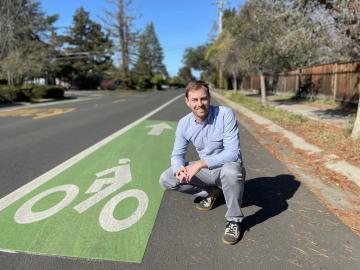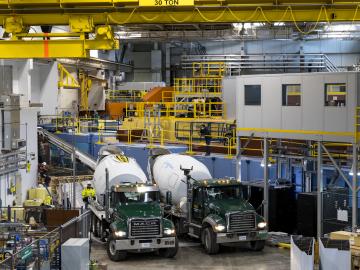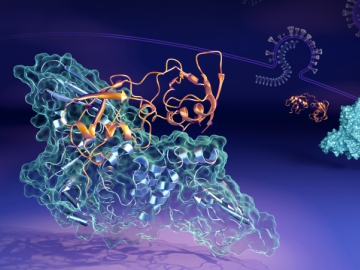
Filter News
Area of Research
- (-) Energy Science (23)
- (-) Materials (21)
- (-) Neutron Science (56)
- Advanced Manufacturing (2)
- Biology and Environment (31)
- Computational Biology (1)
- Computer Science (1)
- Fusion and Fission (14)
- Fusion Energy (5)
- Isotopes (2)
- Materials for Computing (2)
- National Security (15)
- Nuclear Science and Technology (8)
- Quantum information Science (1)
- Supercomputing (46)
News Topics
- (-) Artificial Intelligence (7)
- (-) Fusion (2)
- (-) Machine Learning (4)
- (-) Mercury (1)
- (-) Neutron Science (58)
- (-) Polymers (5)
- (-) Security (4)
- (-) Space Exploration (3)
- (-) Summit (4)
- 3-D Printing/Advanced Manufacturing (26)
- Advanced Reactors (3)
- Big Data (2)
- Bioenergy (14)
- Biology (7)
- Biomedical (11)
- Biotechnology (1)
- Buildings (11)
- Chemical Sciences (9)
- Clean Water (6)
- Composites (3)
- Computer Science (17)
- Coronavirus (10)
- Cybersecurity (6)
- Energy Storage (23)
- Environment (25)
- Exascale Computing (1)
- Fossil Energy (2)
- Grid (13)
- High-Performance Computing (4)
- Hydropower (1)
- Isotopes (6)
- Materials (26)
- Materials Science (24)
- Mathematics (2)
- Microelectronics (1)
- Microscopy (8)
- Nanotechnology (10)
- National Security (2)
- Nuclear Energy (11)
- Partnerships (5)
- Physics (10)
- Quantum Computing (2)
- Quantum Science (2)
- Simulation (1)
- Transportation (19)
Media Contacts

What’s getting Jim Szybist fired up these days? It’s the opportunity to apply his years of alternative fuel combustion and thermodynamics research to the challenge of cleaning up the hard-to-decarbonize, heavy-duty mobility sector — from airplanes to locomotives to ships and massive farm combines.

ORNL researchers used the nation’s fastest supercomputer to map the molecular vibrations of an important but little-studied uranium compound produced during the nuclear fuel cycle for results that could lead to a cleaner, safer world.

A study led by researchers at ORNL could help make materials design as customizable as point-and-click.

When Andrew Sutton arrived at ORNL in late 2020, he knew the move would be significant in more ways than just a change in location.

David McCollum is using his interdisciplinary expertise, international networks and boundless enthusiasm to lead Oak Ridge National Laboratory’s contributions to the Net Zero World initiative.

Cement trucks entering and exiting the Spallation Neutron Source are a common sight as construction of the VENUS neutron imaging beamline progresses. Slated for completion and commissioning in 2024-2025, VENUS is the twentieth neutron instrument at SNS and will offer many new capabilities.

A team led by the U.S. Department of Energy’s Oak Ridge National Laboratory demonstrated the viability of a “quantum entanglement witness” capable of proving the presence of entanglement between magnetic particles, or spins, in a quantum material.

Improved data, models and analyses from ORNL scientists and many other researchers in the latest global climate assessment report provide new levels of certainty about what the future holds for the planet

As the United States transitions to clean energy, the country has an ambitious goal: cut carbon dioxide emissions in half by the year 2030, if not before. One of the solutions to help meet this challenge is found at ORNL as part of the Better Plants Program.

Scientists at Oak Ridge National Laboratory have uncovered how the SARS-CoV-2 virus evades the human immune system by studying the interaction between a viral protein (PLpro) and a key immune protein (ISG15). These insights could guide the development of therapeutic drugs to block this interaction, enhancing the body’s ability to combat the virus.


